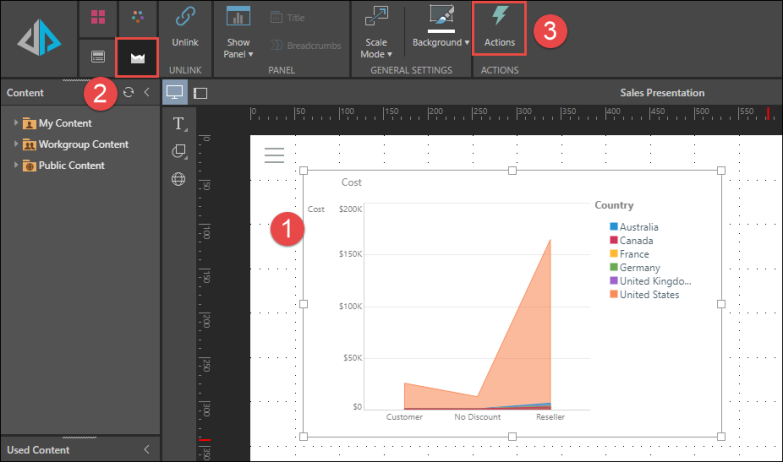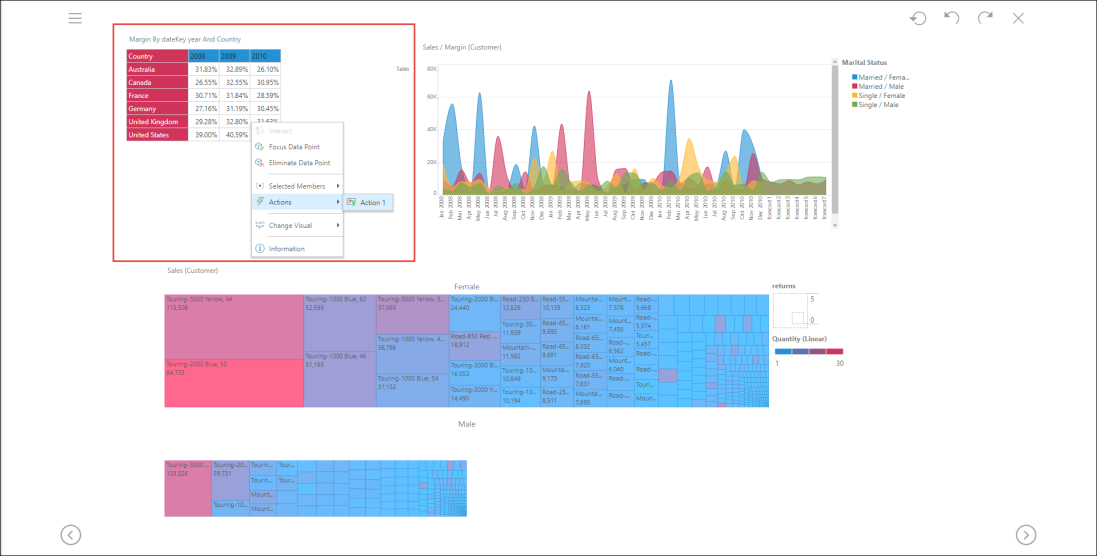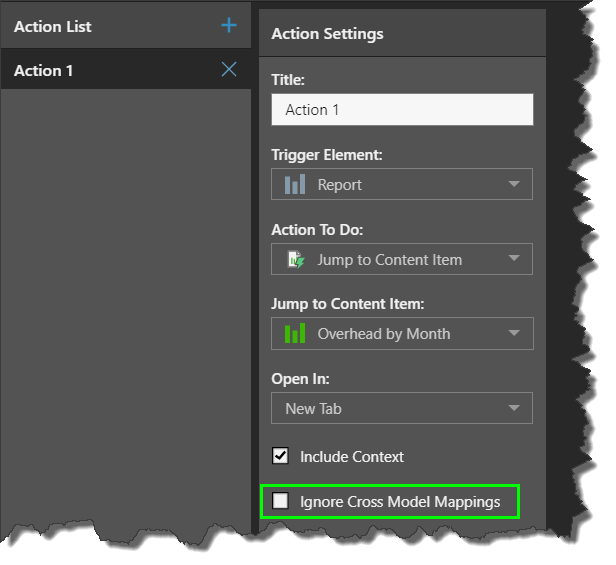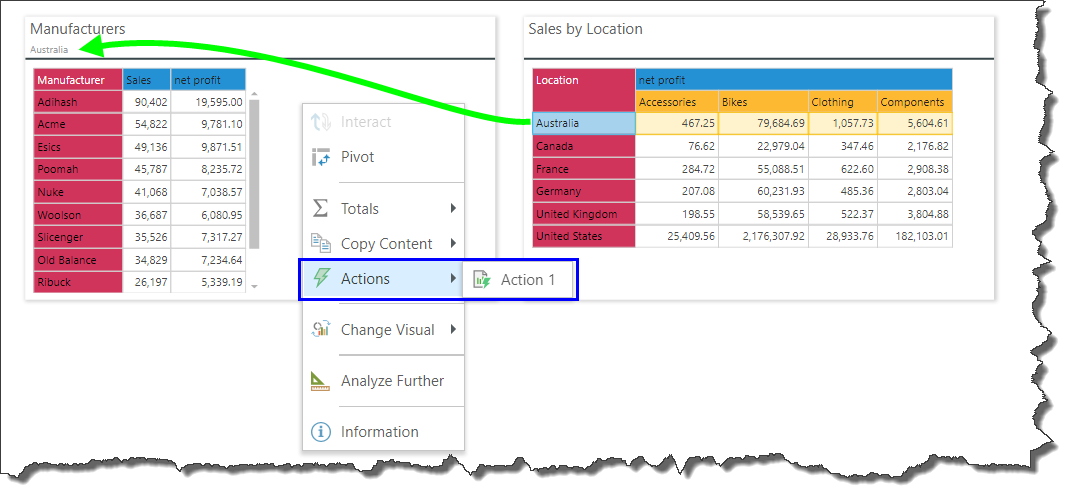'Guided Actions ' are a convenient and effective means of extending the classic flow of analytics. Use the Actions wizard to configure specified actions that will be triggered when a user clicks somewhere on the visual or slide.
Present Actions are identical to Report Actions, but include extra capabilities for slide 'jump' actions.
Note: Actions are not available in the Pyramid Community
To open the Actions wizard, ensure that the relevant visual is selected, then go to the Component ribbon and click Actions.
To learn about the Actions wizard, including the Jump to URL functions, click here.

Actions Wizard
Action List
Add actions to the Action List using the plus sign. To delete an action, click the X next to it. Multiple actions can be added to a single Action List, but each action added to the list can contain a single action only.
Action Settings
Title
Name your action; the action's name will appear in the actions context menu later on.
Trigger Element
Set the target type, which when clicked will trigger the action. This may be a report, hierarchy, measure, member, or cells. The action will be available only for the selected target:
Report: the action will be available from any report element
Hierarchy: the action will be available only for the specified hierarchy
Member: the action will be available for the selected member only
Cells: the action will be available from the cell (data point) context menus
Action to Do
Choose the type of action that should be performed when the trigger element i
Jump to Slide: open a slide in the current presentation. This may be a slide specified by number or name, or it may be based on a PQL function.
Jump to Report: open a report and inject filter parameters from the clicked data element. Choose this option if you want another report to open in Discover when the target is clicked. The Select Report drop down will open - find and select the required report from the folder tree.
Jump to URL: use PQL functions to produce the URL and open it in a new tab. Select this item if the desired action is to open a URL. The URL Data panel will open - copy and paste the required URL, and add any function that you want to perform on the target. Click here to learn more about the Jump to URL option.
Open In: when configuring a Jump to Report or URL action, the 'Open In' option will appear; choose whether the report or URL should be opened in a new tab or in a pop up.
Execute JavaScript: execute JavaScript in the browser.
Include Context: enable the Include Context option if you want the output to include interactions you've performed on the query, such as dicing, and selecting a slice from a slicer.
Jump to Slide
When the Jump to Slide action is selected, users can choose to configure either a simple or an advanced action:
Simple
A simple jump to slide action opens a slide that was given (either by number or by name) by the user who configured the action.
After selecting Jump to Slide from Action Settings panel, configure the following options:
Slide Number: jumps to the given slide by index
Slide Name: jumps top the given slide by name
Inject to Target: injects the selected (clicked) data element into the target (the slide that was jumped to)

Advanced
The Advanced option enables users to jump to a slide based on a given PQL formula. This offers a lot of flexibility, as the slide to jump to will be determined based on whether or not the specified conditions of the PQL expression are met, rather than a static slide number or name. This allows users to ensure that report consumers are led to the most relevant information, based on the data that is clicked.
Click here to review the action PQL functions that can be configured.
Example: Advanced Jump To Slide
In the following example, when the user clicks Bikes in the visualization, it will jump to slide 2. But when the user clicks Components, it will jump to slide 3.
case(criterias(contains("Bikes"), contains("Components")), dataSet("Slide 2", "Slide 3"), "Slide 1")

Actions Context Menu
Access the storyboard actions that have been configured via the visual's context menu in the runtime engine.

Jump to a Content Item with Model Mappings
When the selected action type is 'Jump to Content Item', any interactions given at runtime are applied to the content item opened by the action. By default, Pyramid recognizes cross model mappings that have been configured between items between which an interaction has been applied.
Cross model mappings enable you to cross-filter between content items from different data models, where the relevant hierarchies or member elements are not labeled identically in each data model.
If you don't want this behavior in your 'Jump to Content Item' action, select 'Ignore Cross Model Mappings' (green highlight below) from the Actions Settings tab. In this case, if you select the Jump to Content Item action while an interaction is applied between hierarchies that have a cross model mapping configured between them, the model mapping will be ignored and you will receive an error.


